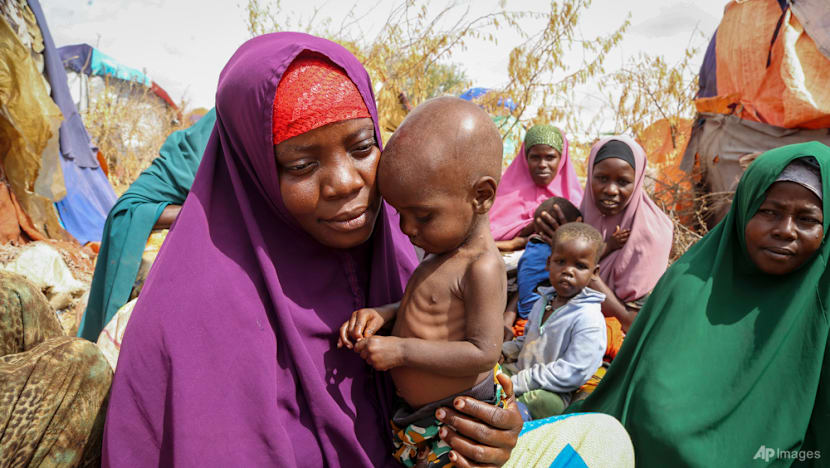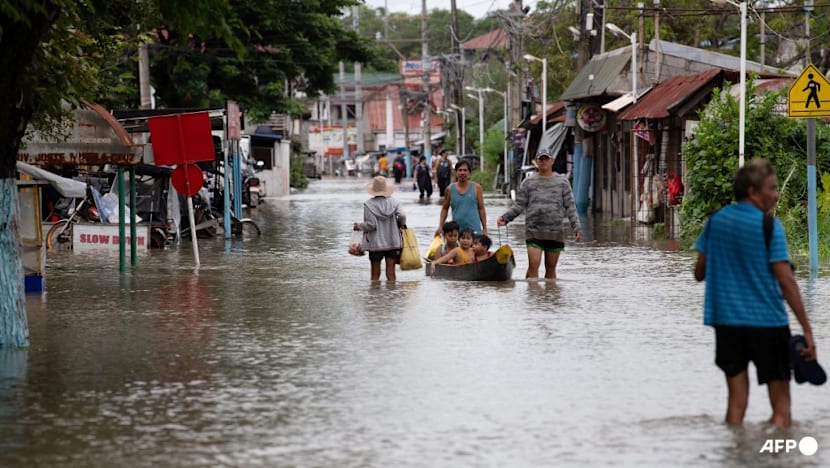Global hunger crisis deepens as UN food agency hit with severe funding cuts
Nearly 14 million people could be pushed to emergency levels of hunger – one step away from famine, says the United Nations’ World Food Programme.


This audio is generated by an AI tool.
Close to 14 million people risk extreme hunger as a result of deep funding cuts from top donors, warned the United Nations’ World Food Programme (WFP) on Wednesday (Oct 15).
Funding at WFP – traditionally the UN’s most funded agency – is set to fall 40 per cent this year, cutting its budget to US$6.4 billion.
While the United States remains WFP’s largest donor, it has slashed contributions by nearly US$3 billion as part of a slew of foreign aid cuts under President Donald Trump’s administration. Other major nations have also pulled back.
WFP’s report warned that cuts to its food assistance could push 13.7 million people in Afghanistan, Democratic Republic of Congo, Haiti, Somalia, South Sudan and Sudan from "crisis" to "emergency" levels of hunger – one step away from famine in a five-level international hunger scale.
Food aid is reaching less than 10 per cent of those in need in Afghanistan as winter approaches, said the agency.
It also said famine has already been declared in Sudan and Gaza, where wars have raged for over two years.
The global agency’s report comes ahead of next month’s COP30 climate conference in Brazil’s Belem city, close to the Amazon rainforest, where leaders are expected to make food systems central to climate action.
WHY ARE ASIA’S TOP EXPORTERS STRUGGLING?
Asia’s top food exporters, including Indonesia, Pakistan and Bangladesh, are also struggling with hunger and malnutrition at home.
For example, India – one of the largest food exporters on the planet – is also home to about 172 million undernourished people. Child malnutrition rates there are among the highest in the world.
In Thailand, among the world's biggest rice producers, an estimated 6 million people go hungry, while one in 10 children face severe food poverty.
Some reasons for this include rising food prices, with inflation pushing up the average cost of essential food items.
Food exporters are also unable to guarantee domestic affordability when it is more profitable to sell food abroad and producers prioritise foreign markets.
This leads to a drop in local supplies and soaring prices that make fresh produce unaffordable for many.
“Poverty and inequality are a major contributor to hunger and malnutrition at home. We have seen prices continue to increase and this affects vulnerable categories much more,” noted Patrizia Fracassi, senior nutrition and food system officer at the UN’s Food and Agriculture Organization.
“In addition to that, we have to see the impact of climate shock and displacement. Countries like Philippines and Bangladesh faced severe weather events and a refugee crisis in 2024, so this is all contributing to hunger and malnutrition despite increased food export,” she added.

Fracassi described this as countries emphasising “cash crops” over nutrient-rich staples.
She said some food products – including fruits and vegetables – do not receive adequate subsidies from governments, and producers are less incentivised to produce them as they are perishable.
“These are the foods that need to be on the plate of the families in order to prevent malnutrition, – especially hidden hunger,” she told CNA’s Asia Now programme on Thursday.
The term refers to micronutrient deficiency, or a lack of essential vitamins and minerals like iron, iodine and zinc despite adequate calorie intake.
Two billion people globally suffer from hidden hunger today, Fracassi said.
“It's an invisible form of malnutrition, unlike famine or acute hunger, which are visible and often linked to emergencies. Hidden hunger is chronic and invisible and affects long-term health, cognitive development and productivity,” she warned.
1 IN 4 FACE FOOD INSECURITY
UN agencies are urging stronger policies, more open markets and long-term solutions to fix what is broken in the global food system.
Persistently high levels of global hunger in recent years have derailed the UN's ambition of ending world hunger by 2030.
Last year, about 2.3 billion – or nearly 1 in 4 – people around the world still experienced food insecurity, while 53 countries and territories faced acute food crises, more than the year before.
In Asia alone, 1.1 billion people faced moderate or severe food insecurity. This refers to a lack of access to sufficient, safe and nutritious food due to financial or physical constraints.
Fracassi said that while many challenges remain, there have been “successful models (that) need to be discussed, shared and replicated”.
“(Aside from) regulations … we should also equally focus on how to incentivise distribution of nutritious food,” she added.
“What is really needed within countries are policies that support the inclusion of farmers, of actors within the food system, while at the same time protecting consumers from high increase in prices.”














